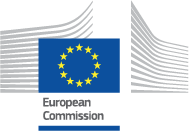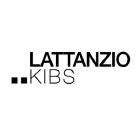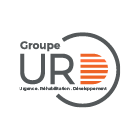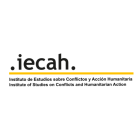1. General Information
1.4.2 Executive summary of the Action. This section is optional at Final Report stage. The summary can be updated to record the achievements of the Action.
2. Project data overview in the country
The numeric data introduced in this chapter at the Final Report stage should be understood as figures (number of beneficiaries, budget amounts) reached at the end of the Action.
2.3.1 [FIN] Number of unique beneficiaries. This section is mandatory at Final Report stage. The Partner will provide the number of direct female beneficiaries and direct male beneficiaries reached at the end of the Action per country of implementation.
2.3.2 [FIN] Number of unique beneficiaries by sex and age. This section is mandatory at Final Report stage. The Partner will provide the age breakdown of direct beneficiaries (divided according to gender) reached at the end of the Action per country of implementation.
2.3.3 [FIN] Number of unique beneficiaries with disabilities. This section is mandatory at Final Report stage. The Partner will provide the number of female and male direct beneficiaries with disabilities reached at the end of the Action per country of implementation.
2.3.4 [FIN] Number of unique beneficiaries by profile. This section is mandatory at Final Report stage. The Partner will provide the status breakdown (local population, internally displaced, refugees/asylum seekers, other persons on the move, returnees and in camp or camp like) of direct beneficiaries reached at the end of the Action per country of implementation.
2.3.5 [FIN] Number of organisations directly targeted and benefiting from the Action. This section is mandatory at Final Report stage. The Partner will provide the number of local and international organisations reached at the end of the Action per country of implementation.
2.4 [FIN] Sectoral information. This section is mandatory at Final Report stage. For each identified sector in the country, the Partner will provide the following information:
- total amount incurred at the end of the Action per sector;
- total number of beneficiaries, divided per gender, reached in the sector at the end of the Action;
- update on transfer modalities, detailing the amount incurred and the beneficiaries reached per specific transfer modality at the end of the Action;
- (if applicable) explanation on why cash transfers were not used;
- (only applicable to health, nutrition, protection and education in emergencies sectors): specific information on targeted beneficiaries.
3. Humanitarian Organisation in the Area
3.3 [FIN] Report on synergies: This section is optional at Final Report stage. The Partner will update this information only if the situation described in the proposal has drastically changed.
4.Needs assessment and risk analysis
4.6 [FIN] Report on needs assessment: This section is optional at Final Report stage. The Partner will provide as necessary, an update of section 4. In particular, it will provide information on new assessment(s) carried out since the submission of the Interim Report, including an update on newly emerged risks of on-going crises. The Partner will also report on major changes and specific difficulties encountered in relation to the initial assessment.
5. Beneficiaries
5.3.3 [FIN] Does the proposed action provide a specific targeted response for groups or individuals with specific vulnerabilities? If the Partner answered “yes” at proposal stage, this chapter is mandatory at Final Report stage (otherwise, it will not be visible). The Partner will have to select maximum 4 options from the list and, in the narrative box, provide details on the targeted groups and elaborate on the specific response, highlighting the differences versus the standard response/activity.
5.4 [FIN] Report on beneficiaries identification criteria and their involvement. This section is optional at Final Report stage. The Partner will comment and provide, if needed, an update on the beneficiary sections. By sector, the partner should explain 1) how beneficiaries have been targeted, 2) how they have been involved in the implementation and monitoring of the Action. When relevant, the Partner will provide information on difficulties encountered with the selection and involvement of beneficiaries and the corrective measures identified and undertaken due to the beneficiary involvement.
6. Gender and age marker
6.4 [FIN] Gender and Age. This chapter is mandatory at Final Report stage. The Partner has to highlight changes, improvements or setbacks to integrate gender and age in actual implementation. Core information should be detailed in the relevant sections of the Single Form.
Is the Marker applicable? If the marker was deemed applicable at SF previous stages, it has to remain applicable at the Final Report stage.
Q1: Does the final report contain sex and age disaggregated data for beneficiaries, in addition to an initial gender and age analysis? The Partner can answer "Yes" only if (1) each of the sub-criteria were fully explained in the relevant chapter of the Single Form at Final Report stage and (2) Sex and Age Disaggregated Data (SADD) were provided including for the Indicators (when requested).
Q2: Is the assistance adapted to the specific needs and capacities of different gender and age groups? Based on initial gender and age analysis and monitoring, was assistance systematically adapted to the specific needs of different gender and age groups? The Partner has to provide concrete examples in the Single Form.
Q3: Does the Action prevent/mitigate negative effects? The Partner will answer "Yes" only if the Single Form includes information on how negative effects potentially caused by the Action (e.g. SEA) have been prevented and how gender or age-related risks linked to the context (e.g. discrimination) have been mitigated.
Q4: Do relevant gender and age groups adequately participate in the design, implementation and evaluation of the Action? The Partner will answer "Yes" only if 1) a participatory approach of diverse gender and age groups and 2) adequate team composition throughout implementation and monitoring are demonstrated.
6.5 [FIN] Report on Gender and Age marker The Partner will report on the changes related to the markers which occurred during the project implementation.
7. Logic of intervention
7.2 [FIN] Achieved value. This section is mandatory at Final Report stage. The Partner will indicate the achieved value for each indicator at specific objective level achieved during the Action.
7.2 [FIN] Report on indicator, baseline, progress, target and achieved value. This section is mandatory at Final Report stage. Here the Partner will report on the level of achievement of the Specific objective, providing additional information and context that the indicators might not have been able to capture. If using a pre-defined KOI, the questions listed in the KOI guidance should be responded to here.
7.3 [FIN] Final total amount This section is mandatory at Final Report stage. Here the Partner will mention the estimated total costs of the Result (in line with figures provided in the budget). Costs should reflect the entire Action and not only DG ECHO contribution.
7.3 [FIN] General conclusions on this result This section is optional at Final Report stage. Here the Partner can report on the final achievement of the result, including the potential main challenges encountered. Major variations versus expected/planned achievement for the result should be explained.
7.3 [FIN] Source and method of data collection. This section is optional at Final Report stage. The Partner can update information on the source of verification and how the value was collected or calculated.
7.3 [FIN] Achieved value. This section is mandatory at Final Report stage. The Partner will indicate the achieved value, using the correct unit (percentages or absolute numbers) as defined by the indicator, for each indicator at result level achieved during the Action.
7.3 [FIN] Report on all the indicators for this result. This section is optional at Final Report stage. Here the Partner can provide final comments on the indicators' achievement for this result and explain why targets have not been achieved or surpassed. If relevant, the Partner should mention how difficulties in collecting data were overcome and issues not covered by the indicators but important to understand the achievement of results (e.g. qualitative achievements not adequately captured in a quantitative indicator).
7.3 [FIN] Report on the activity. This section is optional at Final Report stage. Here the Partner can provide a final update on each activity's implementation. If relevant, the Partner should explain challenges and measures taken to mitigate these.
7.3 [FIN] General Conclusions on this result. This section is optional at Final Report stage. Here the Partner can report on the final achievement of the result, including the potential main challenges encountered. Explain any major variation versus expected/planned achievement for this result.
7.8 [FIN] Report on preconditions, assumptions and risks. This section is optional at Final Report stage. Here the Partner can explain whether the preconditions were met, whether any risk materialized and how it reacted to secure the success of the Action.
8. Resilience marker
8.3 [FIN] Resilience. This section is mandatory at Final Report stage. The Partner will have to reply “yes” or “not sufficiently” to the four questions of the Marker and the Single Form will automatically calculate the final score.
8.4 [FIN] Update on Resilience marker. This section is mandatory at Final Report stage. The Partner is requested to report and explain the main variations or changes in any element covered by the 4 questions above. The Partner will also have to provide information on improvements and setbacks in efforts to integrate resilience.
9. Monitoring and evaluation
9.7 [FIN] Report on monitoring and evaluations (including complaint mechanism). This section is optional at Final Report stage. Here the Partner will explain how the monitoring was carried out and the main challenges encountered. If applicable, copies of the evaluations, audits and studies financed by DG ECHO shall be uploaded as Annexes.
10. Implementation
10.1.2 [FIN] Report on human resources and management capacities. This section is optional at Final Report stage. The Partner will report on issues mentioned at proposal and interim report stages and will provide explanations in cases where the management of Human had a negative effect on the implementation of the Action.
10.2.1 [FIN] Did you deploy EU Aid Volunteers in the framework of this Action? This section is optional at Final Report stage. The Partner will select “yes” or “no” as applicable.
10.3.4 [FIN] Report on supply chain. This section is optional at Final Report stage. The Partner should provide final information on the supply chain (modifications or changes versus initial plan that were needed in the course of the project)
10.4.4 [FIN] Report on supply chain challenges and measures to mitigate them. This section is optional at Final Report stage. If relevant, the Partner can report on key challenges (including environmental dimension) encountered and measures taken to mitigate them.
10.6.1 [FIN] Final amount of EC budget allocated. Priovide here the total amount transferred to the IP including Indirect costs as well, if any.
10.19 [FIN] Report on the other participants in the Action. This section is optional at Final Report stage. In the Final Report, the Partner can explain in general terms how the Implementing Partners contributed to the achievement of the objective.
11. Field coordination
11.6 [FIN] Report on field coordination. This section is optional at Final Report stage. The Partner will report on the relevant and significant changes and/or problems in relation to the coordination sections.
12. Visibility, communication and information activities.
12.4 [FIN] Report on the achievements and on the challenges encountered. For standard visibility, the partner will explain what type of activities have been implemented and where, corresponding to the indications in the proposal. Evidence of those activities (section A and B) needs to be provided (pictures, articles, etc.). The partner can insert a link where such proofs can be found (link to website, web post, etc.). In case the minimum requirements could not be achieved, the partner must provide a good justification.
In case of above standard visibility activities, the partner will have to report according to the separate communication plan that has been described in section 12.2.
13. Financial overview of the Action.
13.1 [FIN] Final Report incurred costs. This section is mandatory at Final Report stage. Here the Partner will state the amount of incurred direct costs and the corresponding percentage of indirect costs during the implementation period.
13.2 [FIN] Percentage of direct eligible costs allocated to the support costs. This section is mandatory at Final Report stage. Here the Partner will provide the % value of direct eligible costs allocated to support costs for the implementation period.
13.3 [FIN] Final budget. This section is mandatory at Final Report stage. Here the Partner will indicate the amount requested to DG ECHO and the other sources of funding (if applicable).
13.9 [FIN] VAT charged to project (including via the implementing partners)? This section is mandatory at Final Report stage. The default answer is “no”, the Partner should update accordingly.
13.9.1 [FIN] Reasons and amount of VAT charged to project. This section is displayed only if the Partner replied “yes” to 13.9 and is mandatory. The Partner shall provide the amount and justify why VAT was charged and upload in Appel a proof of the recent (max 2 years) exemption request sent to the tax authorities and their refusal letter; alternatively, it can upload a copy of the applicable legislation confirming that VAT cannot be refunded.
13.11 [FIN] Did you charge HQ staff costs to project? If the Partner select “yes”
13.11.1 [FIN] appears and the partner will provide details and justify HQ staff costs charged. As a general rule, HQ staff costs are not eligible, but there can be exceptions (specific staff profile/added value, role, period of time).
13.12 [FIN] Were there any remaining goods? This section is mandatory at Final Report stage. The default answer is “no”, the Partner should update accordingly.
13.12.1 [FIN] Details on the remaining goods and their eventual transfers. This section is displayed only if the Partner replied “yes” to 13.12 and is mandatory. The Partner shall confirm that the remaining goods (per category) do not exceed 20% of the goods purchased under this project. If remaining goods represents >20% of the goods purchased (per category), please upload a table to the Final Report with the following information: quantities purchased, remaining quantities, proposed final destination (donation, transfer to other projects). An example of reporting table (which can be adapted by the Partner, provided it respects minimum requirements) is provided in the Annotated Humanitarian Aid Model Grant Agreement, Annex 5.
13.13 [FIN] Was there any equipment charged to the project at full price (instead of depreciation)? This section is mandatory at Final Report stage. The default answer is “no”, the Partner should update accordingly.
13.13.1 [FIN] Details on the equipment charged to the project at full price. This section is displayed only if the Partner replied “yes” to 13.13 and is mandatory. The Partner shall upload in Appel a table with quantities purchased, purchase date, unit cost, total cost, and proposed final destination (transfer to another ECHO Action, or if such transfer is not possible, transfer to beneficiaries, local / international non-profit organisations, or local authorities - subject to DG ECHO agreement). An example of reporting table (which can be adapted by the Partner, provided it respects minimum requirements) is provided in the Annotated Humanitarian Aid Model Grant Agreement, Annex 5.
13.13.2 [FIN] You are expected to upload to APPEL the list of equipment fully charged to the Action, the list of remaining goods, the list of low value equipment.
13.14 [FIN] General ledger. You are expected to upload to APPEL the general ledger. If general ledger contains expenditures outside of the eligibility period add a column and justify them.
13.16 [FIN] The organisation confirms that the co-financing has not led to a double funding of the activity. The Partner will confirm at the Final Report stage that the various sources of funding do not lead to double-funding.
16. Conclusions and lessons learned
16.3 [FIN] Conclusions and lessons learned. This section is mandatory at Final Report stage. The Partner shall provide its main conclusions and lessons learnt, including the main difficulties faced during the implementation. The Partner should describe impact and proposed changes for future interventions, avoiding repetition of information already provided in other parts of the Single Form.




